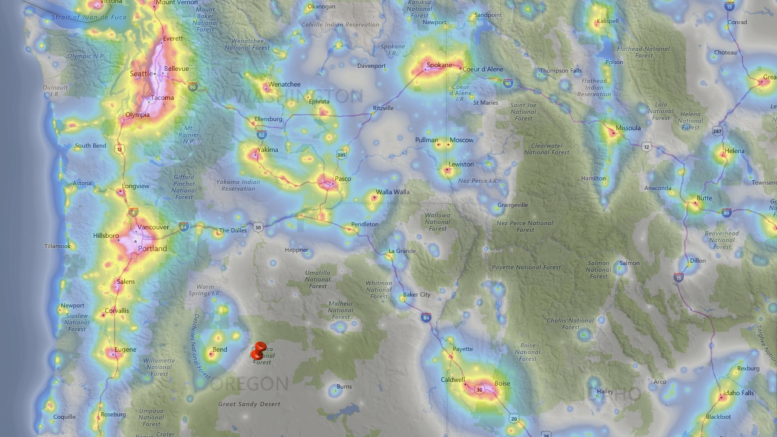Here’s a great article written by guest writer Frank Hammond. He is a very talented and knowledgeable Oregon land lawyer, who has more than 30 years experience in the industry. His website is frankhammondlaw.com. He has a depth of perspectives as he has worked with both private and public entities for land use issues. To speak with him, schedule a consultation with at 503-837-3471 or through email and make sure to follow him on Linkedin! If you’re considering buying land or need help with light pollution land issues in Oregon, Frank Hammond is the guy to work with.
In our rapidly developing world, light pollution has become a pervasive problem that affects both human health and the natural environment. Excessive artificial light disrupts ecosystems, interferes with astronomical observations, and disrupts the sleep patterns of many organisms, including humans. However, one effective strategy to mitigate this issue is through the implementation of zoning regulations. By strategically controlling outdoor lighting, we can preserve the beauty of the night sky while promoting sustainable and responsible lighting practices. This article explores the significance of zoning as a potent tool in the fight against light pollution.
Understanding Light Pollution:
Before diving into the benefits of zoning, it’s important to grasp the concept of light pollution. Light pollution refers to the excessive or misdirected artificial light produced by human activities. It comes in several forms, including skyglow, glare, and light trespass. The uncontrolled spread of artificial light not only obstructs our view of the stars but also has detrimental effects on the environment and human well-being.
The Role of Zoning:
Zoning is a land-use management technique that divides a municipality into different zones, each with specific regulations governing land use and development. While zoning is typically associated with controlling building heights, densities, and land uses, it can also include regulations pertaining to outdoor lighting. By incorporating lighting regulations into zoning codes, communities can effectively combat light pollution and create more environmentally conscious and sustainable urban environments.
Advantages of Zoning for Light Pollution Mitigation:
1. Protecting Dark-Sky Areas
Zoning regulations can designate specific areas, such as nature reserves, national parks, or astronomical observatories, as “dark-sky zones.” These areas would have stringent lighting restrictions, ensuring minimal light pollution and preserving the natural darkness necessary for wildlife, stargazers, and astronomers.
2. Controlling Lighting Fixtures
Zoning can establish standards for outdoor lighting fixtures, including restrictions on brightness, color temperature, and shielding. By implementing measures such as downward-facing lighting and shielding, communities can minimize skyglow, glare, and light trespass.
3. Promoting Energy Efficiency
Zoning regulations can encourage the use of energy-efficient lighting technologies, such as LEDs, by mandating their adoption in new developments. LEDs provide better light control, reducing wasted light and saving energy.
4. Public Awareness and Education
Zoning initiatives can also include educational programs to raise public awareness about the adverse effects of light pollution. By educating citizens about the benefits of responsible lighting practices, communities can foster a sense of responsibility and encourage individual efforts to reduce light pollution.
Success Stories:
Several communities worldwide have successfully implemented zoning regulations to combat light pollution. For example, Flagstaff, Arizona, is renowned for its dark-sky ordinances, which have effectively preserved its status as an international dark-sky city. Other cities, including Tucson, Arizona, and Schenectady, New York, have adopted lighting regulations that significantly reduce light pollution while maintaining functionality and safety.
Light pollution poses a significant challenge to our environment and well-being, but zoning offers an effective solution. By incorporating lighting regulations into zoning codes, communities can protect the night sky, promote energy efficiency, and enhance the quality of life for residents and wildlife. To create a more sustainable future, it is crucial for policymakers, urban planners, and citizens to recognize the importance of zoning as a powerful tool in the fight against light pollution. Together, we can restore the natural darkness of our nights and reconnect with the beauty of the starlit sky.

Be the first to comment on "Using Zoning to Control Light Pollution"